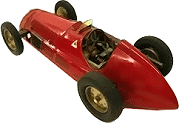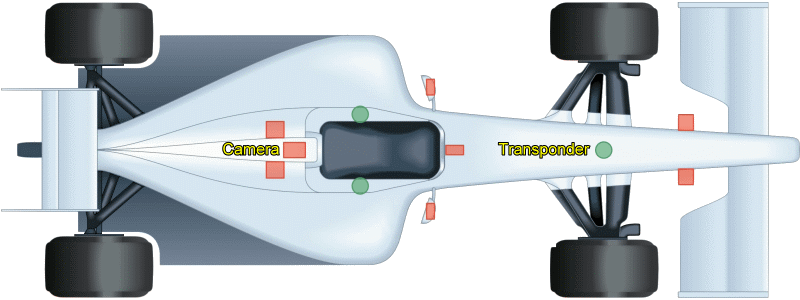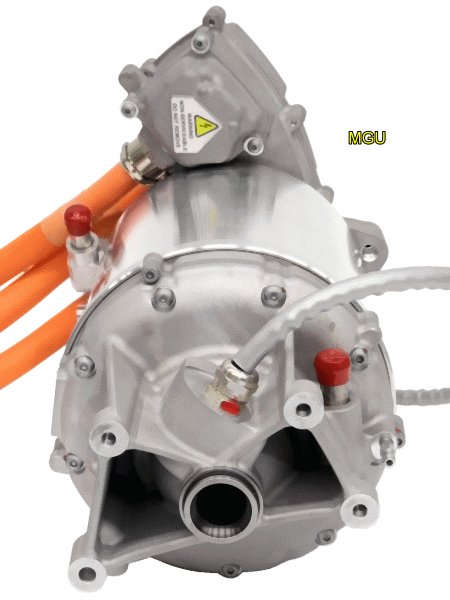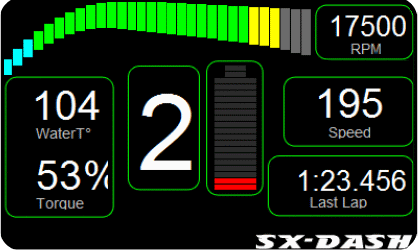Formula E - Electric race car |
 FIA (International Automobile Federation / Fédération Internationale de l'Automobile), an international organization that establishes the rules of the various sports events in motorsport, decided in 2012 to introduce into their sports program of cars, racing car type 'Formula 1', but with the difference that the drive unit electric motor rather than gasoline engine - 'Formula E'. In this sense, have created competition in a way that all competitive teams use the same car which can only be optionally paint by will with marks of companies that participated in the construction of the car which must all be in the same place. As the 'Tesla Motors' already taken in the commercial market (since 2008), and patent rights publicly announced unless the patent rights for the manufacture of batteries, better to say accumulators, is expected with the introduction of the championship in the 'Formula E' rapid development of technology related to the electric racing car. Therefore, the FIA has also joined the encouraging the development of cars that use an electric motor as a drive unit. Although time of racing cars displayed in the header of this section long ago, it is certain that the contest 'Formula 1' over time contribute to a safer and better quality development of family cars that have little by little to be incorporated innovations from 'Formula 1'.
FIA (International Automobile Federation / Fédération Internationale de l'Automobile), an international organization that establishes the rules of the various sports events in motorsport, decided in 2012 to introduce into their sports program of cars, racing car type 'Formula 1', but with the difference that the drive unit electric motor rather than gasoline engine - 'Formula E'. In this sense, have created competition in a way that all competitive teams use the same car which can only be optionally paint by will with marks of companies that participated in the construction of the car which must all be in the same place. As the 'Tesla Motors' already taken in the commercial market (since 2008), and patent rights publicly announced unless the patent rights for the manufacture of batteries, better to say accumulators, is expected with the introduction of the championship in the 'Formula E' rapid development of technology related to the electric racing car. Therefore, the FIA has also joined the encouraging the development of cars that use an electric motor as a drive unit. Although time of racing cars displayed in the header of this section long ago, it is certain that the contest 'Formula 1' over time contribute to a safer and better quality development of family cars that have little by little to be incorporated innovations from 'Formula 1'.
However, the FIA has decided for an unorthodox approach. Instead of different teams and companies develop different cars and innovate in different ways, after years of experience FIA decided to unite the best of so far achieved in designing a car that will be the same for all teams in the competition. True, it will lack the individual technological development, but will allow the joint development of the already existing solutions. Thus, the FIA set a deadline until early 2014 to create a usable competitive racing car using already available technology and shared development of certain parts of a race car as follows:
Small group but very distinguished! Firms are really reputable, and the deadline for making tasks was quite short, little more than a year, and laudably, a result that might look like the following picture.
 |
| Figure* 7.10.4 Formula E - Elektric racing car Spark-Renault SRT-01E. |
So, the car is somehow simplified version 'Formula 1' (no KERS, DRS and similar 'gadgets') with a slightly smaller bunch of electronics, but it can be noted that the concept of transferring power to the drive wheels of the same, as in 'Tesla Motors'; power over the transmission to the differential, which is the gearbox, transmitted to the wheels in the same way as with the 'Formula 1', or classic car. The electric motor is a DC-type permanent magnet and because of the relatively small number twice that speed is achieved, unlike the 'Tesla Motors' three-phase motor, it is necessary to use the transmission with respect to the better utilization of available power.
FIA all prescribed, the length, width, wheelbase, height, total weight, weight of accumulators, even to the point where there will be cameras and wireless transponder system. The figure below is a general layout for 'Formula 1' and 'Formula E', but for this reading dimensions are of importance, and are not listed.
 |
| Figure 7.10.5 General look of vehicles 'Formula 1' and 'Formula E' and deployment of transponder systems. |
For transponder system, regardless of the two-way communication, it is forbidden to control remotely from the box (telemetry). Primarily used for sending videos and pictures with the camera and data about events in the race car.
Thus, the engine and drive system are simpler, but the accumulator having a considerable dimensions (200 kg weight with operating voltages up to 1'000 V and a capacity of up to 30 kWh) as illustrated in Figure 7.10.4. The drive system, synchronous DC motor - MGU (Motor Generator Unit), the control electronics for motor control - MCU (Motor Control Unit), battery system - accumulator and the steering wheel where there are levers with its underside and elements for electronic control and settings of the MCU at front of steering wheel, are presented at the next set of pictures.

|
|
|
Figure** 7.10.6 Basic devices of drive and steering. ( + / - ) |
Of course DC electric motor does not have brushes, but the position of the rotor reads the sensors, based on which computer orders to the control electronics through which of stator winding should run a current to create a rotating magnetic field. The efficiency of the engine is considerable - 96%. From the data on the accumulator can be concluded that despite the efficiency of the electric motor, due to the large current through the motor and the electronic control system and forcefully discharging the accumulator altogether to cool down for as envisaged radiator on each side of the vehicle. On the steering wheel on a small display are shown different data as shown in the following set of images.

|
|
| Figure** 7.10.7 Display at steering wheel. ( + / - ) |
All of the above allows the car weighs 888 kg, dimensions 500×180×125 cm, with the power of the electric motor 200 kW, with a five-speed sequential gearbox with a fixed ratio of pinion gears with sequence changes in velocity of less than 1 second, which leads to shorter braking distance, can reach speed of 225 km/h, with acceleration from 0 to 100 km/h in about 3 seconds.
SUMMARY:
So 'Formula E' is basically a race car very similar to the car at 'Formula 1', but also very fast car, which means that the car is still designed for professional racing drivers. Complete system designed of racing is different. All events are held in the city environment, participating 10 teams which included 4 cars and each team has two drivers. So, the race involved 20 cars that compete along a circular path lengths 2-3 km in 45 minutes. During the race every driver must use two cars with regard to energy stored in the accumulator, which is insufficient for the entire course of the race, because it is not planned to replace the accumulator. Quick replacement of accumulator basically disables integrated cooling system for accumulator, the control unit of motor and of motor itself. Each car during the season can only use one motor, one accumulator and one transmission. During the race weekend (training and racing) driver has the right to use five sets of tires. So, all the same conditions, and primarily comes to the fore driving skills rather than advanced technology. But we need to wait what will happen if the FIA allowed the participation of cars and other potential manufacturers of electric car racing.
'Concept_One', a unique all-electric car described on the next page will be the official car of 'Formula E' during all competitions, they are going to view the tracks and perform other necessary tasks, and will also be used for promotion tours of race tracks during competition of 'Formula E'.
The electric car is possible in the future solution for urban vehicle, so this is a possible reason for holding the championship races of 'Formula E' in the cities. How much will all described contribute to technological progress of electric car and its possible application in daily practice remains to be seen.
|
Citing of this page: Radic, Drago. " Informatics Alphabet " Split-Croatia. {Date of access}; https://informatics.buzdo.com/file. Copyright © by Drago Radic. All rights reserved. | Disclaimer |